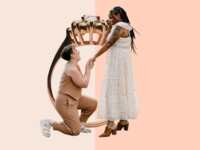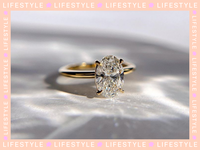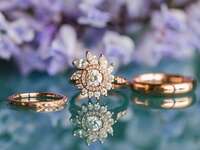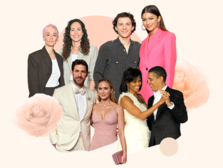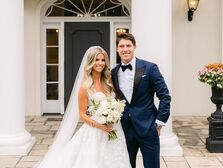7 Engagement Ring Etiquette "Rules" to Ditch Now and Forever

While couples are constantly rewriting the rules for getting married, it's no secret that the entire experience is steeped in tradition. Even as trends evolve and modernize over the years, it seems like some things stay the same—especially when it comes to engagement ring etiquette and proposal trends. But we'll let you in on a secret: Some rules are meant to be broken.
These days, getting engaged is less about the formality and more about crafting an experience that reflects your partnership and your love story. Gone are the days of following traditional engagement ring rules that feel stuffy and outdated (ahem, the three months' salary rule). As couples completely revamp how they get married, the same is true of how they get engaged too. Below, we debunk seven of the most common engagement etiquette "rules," along with our hot takes on why it's time to ditch them now and forever.

The "Rule": You can't tell your partner exactly what ring you want.
There's an age-old misconception that you can't tell your partner what kind of engagement ring you want. Instead of being upfront and honest, some resort to sharing preferences with friends or family in hopes that it makes its way back to their partner through the grapevine, saying "that's a nice ring" during a movie or TV show, or dropping ring hints that, quite frankly, go over their partner's head. The idea of outright saying what you want may seem taboo, but we're here to get rid of this engagement ring etiquette "rule" once and for all.
Reality: Communication leads to everyone feeling happy and heard.
Communication is the key to a happy and successful marriage, and it starts before you say "I do." If you have strong feelings about the kind of engagement ring you want to wear every day for the rest of your life, tell your partner directly. "Couples should definitely discuss the style of the engagement ring, especially if opting for a bespoke piece as it comes with endless design options," says Los Angeles-based jeweler Grace Lee, noting that one simple way of doing so is sharing links and pictures online. "With social media, it's much easier than ever before to discuss preferences."
The rising trend of talking about the kind of ring you want is reflected in data too. According to The Knot 2024 Jewelry & Engagement Study, 77% of those being proposed to last year had some type of involvement in selecting or purchasing the engagement ring. We found that 39% of people said they were somewhat involved in the ring shopping process by hinting or discussing what they wanted, while 29% shopped and looked at rings with their partner. Nine percent even said they were present when the ring was purchased. So, take it from real couples: It's normal to be honest about what you want.
The "Rule": You shouldn't shop for engagement rings together.
When it comes to engagement ring shopping etiquette, you might think it's bad luck to try on options before you're actually engaged. You may also have a preconceived notion that trying on rings and shopping together may spoil the "surprise" of the engagement. We're here to debunk this myth, as it goes hand-in-hand with the rule above. Just like you can talk about what ring styles you like, you can also shop together with your partner. In fact, experts highly recommend trying on engagement rings before the proposal.
Reality: Shopping together level-sets expectations and priorities.
There are plenty of benefits that come with engagement ring shopping together. Not only will this help you voice your preferences, it gives you the opportunity to find designs that comfortably fit your budget. "I always recommend couples start shopping together," says New York-based jeweler Ashley Zhang, noting that this won't diminish the surprise element of the actual proposal. "If the person receiving the ring has a particular taste or style, it's usually best to have them involved throughout the process while keeping the proposal itself a surprise."
The "Rule": You should spend three months of your salary on the ring.
If you've done any engagement ring research, you might have come across the "three months' salary rule." This engagement ring etiquette adage indicates that the buyer should spend three months' worth of their salary on the purchase. What you might not realize is this began as a marketing campaign during The Great Depression to promote more diamond sales while the industry was struggling. It started as the one-month salary rule, then was increased to two and, ultimately, three.
Reality: Spend what realistically makes sense for your lifestyle.
What's the secret formula for determining what you should spend on an engagement right? It comes down to what you can comfortably afford. While you can certainly reference the average cost of an engagement ring or calculate what three months of your salary is, these numbers should be used as reference points, not absolute truth.

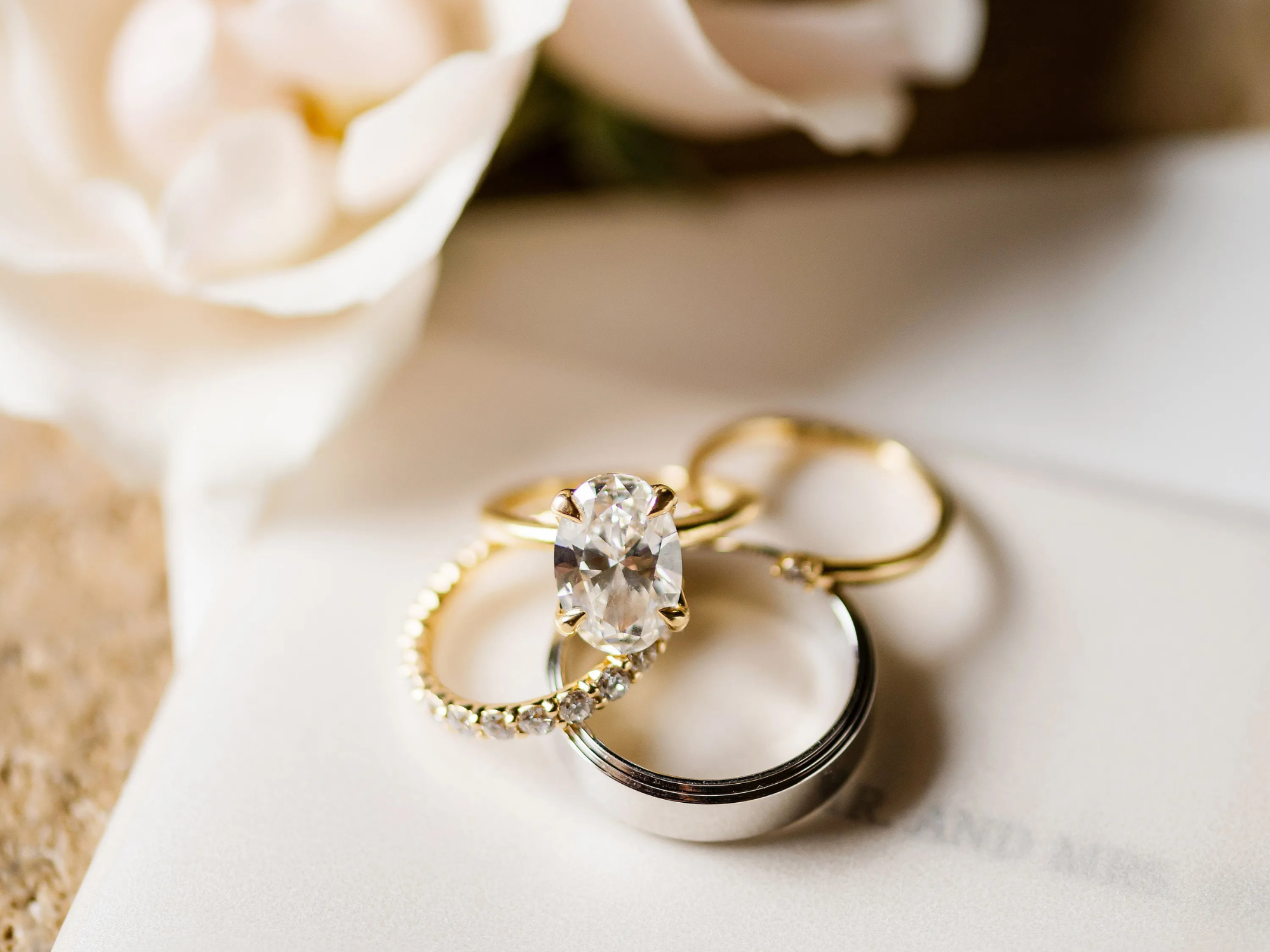
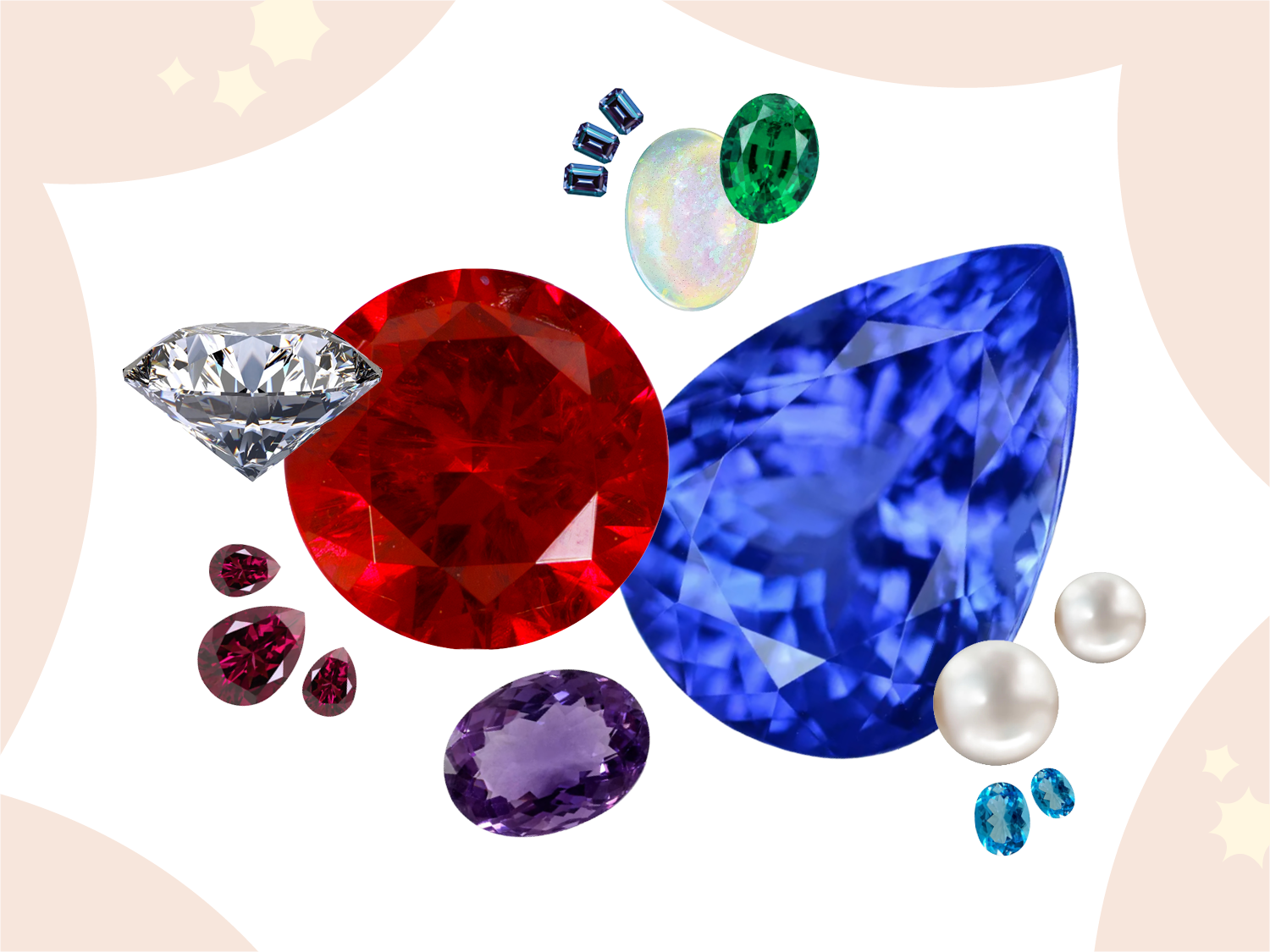
The most important engagement ring etiquette rule to follow revolves around your budget. It's best to spend an amount that makes sense for you. After all, beginning married life by paying off engagement ring debt is never an ideal scenario. "Couples should agree on expectations and a price and not push for something that would make them feel uncomfortable," Zhang suggests. "I always say that we can make a gorgeous ring at almost any budget."
The "Rule": You should get a ring you think you'll still love in ten years.
Social media and internet culture perpetuate an endless trend cycle. While "coastal grandmother" or the "fisherman aesthetic" might be popular today, you could still be hung up on the cottagecore trend from a few years ago. When it comes to weddings, some people (be it your mom, your future MIL, or a random stranger on TikTok) say that couples should keep things timeless and classic. After all, you don't want to look back on your bridesmaid dresses or your engagement ring in ten years and cringe, right?
Reality: Get what you want, whether it's timeless or trendy.
Wrong! This is one of those engagement ring rules that you should never feel pressured to follow. If your dream style is considered one of the biggest engagement ring trends right now, you probably will still love it in ten years' time. Whether you're all about a simple solitaire or you love the modernity of an east-west setting, get the design you covet. It's yours, after all, so it should be a piece you're excited to wear every day.
The "Rule": Engagement rings should feature a colorless diamond.
Google "engagement ring" and you'll see hundreds of photos of colorless diamonds. While brilliant diamonds are synonymous with engagement jewelry, they certainly aren't your only option. In recent years, more couples have been turning this engagement ring etiquette rule upside down.
Reality: Your dream ring should look exactly how you want it to.
Based on data from our study, clear diamonds do still make up the majority of center stones in the US (83%, to be exact). However, we also found that 10% of couples opted for an engagement ring with a precious stone (AKA anything that's not a diamond). Of that sub-group, some of the most popular alternative options were moissanite, sapphire and emerald. The sky's the limit when it comes to finding an engagement ring that looks like a true expression of your personal style.
The "Rule": You only need one engagement ring.
Proposers typically only present one engagement ring during an engagement. But what if we told you this engagement ring rule could be on the way out? The concept of buying multiple engagement rings may seem straight up outlandish, and it's certainly not something you need to consider if you have no desire to wear various styles. But if you're the type of person who likes to change up their daily jewelry, you'll be happy to learn we may be on the verge of uncovering a new ring shopping trend.
Reality: You can divide your budget to cover multiple rings (if you're into that).
One of the most fascinating findings from our study is that the cost of an engagement ring continues to decline every year. (While the average right now is $5,200, it was $6,000 in 2021). Part of this shift could be attributed to the rising popularity of lab-grown diamonds, which are significantly more affordable than mined diamonds. So how does this correlate to buying multiple rings?
If you're the type of person who likes to have options, you might be intrigued by the idea of investing in multiple designs. Instead of buying one diamond engagement ring with a near-flawless GIA rating, you could work with your jeweler to identify multiple designs that look similar but are more budget friendly. You might also consider investing in a lookalike travel engagement ring if you're frequently on-the-go and want to keep your gems safe at home.
The "Rule": One person has to foot the bill.
Considering the average cost of an engagement ring is just over $5,000, there's no denying it's a sizable expense. And while it's common for the proposer to buy the ring, either partner can contribute any amount they'd like.
Reality: Both partners can contribute as much as they want (or can).
Although our data found that 92% of proposers paid for the engagement ring, 4% said their partner paid, while 3% said they both contributed to the purchase. While those numbers are on the lower end, it remains a viable option, especially if it makes sense for your financial status and your lifestyle. "While we see many couples who prefer for one partner to pay for the ring, it's becoming more common for the recipient of the ring to be involved in both choosing and paying for their ring," says jewelry designer Mark Broumand. "We're finding that some couples are open to both partners contributing to the cost in order to get their dream ring."
This sentiment is echoed by Los Angeles-based jeweler Anita Ko: "Now, I'm seeing more and more [people] contribute to the budget of their ring so that they can get the style they've always dreamt of."

